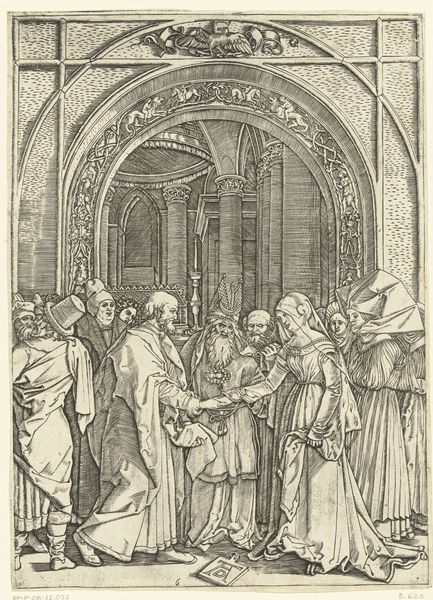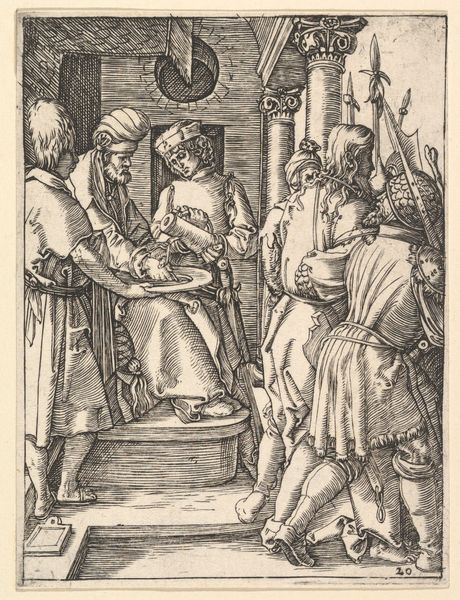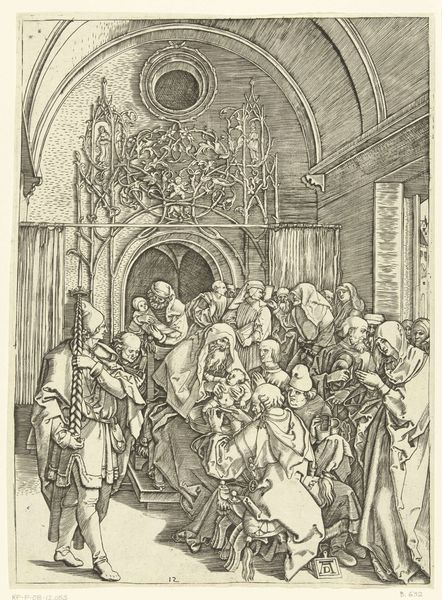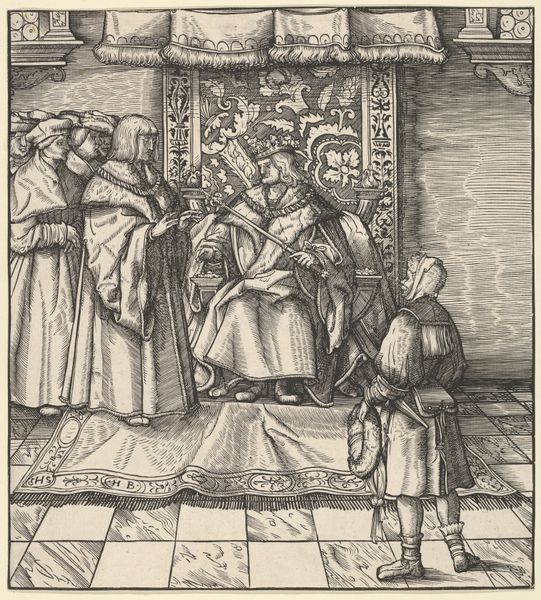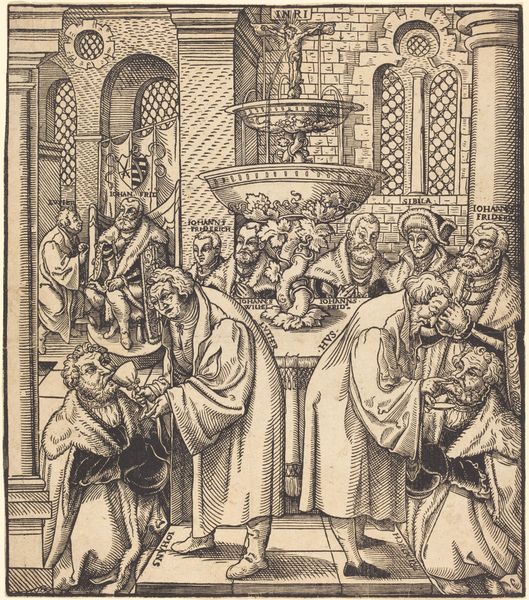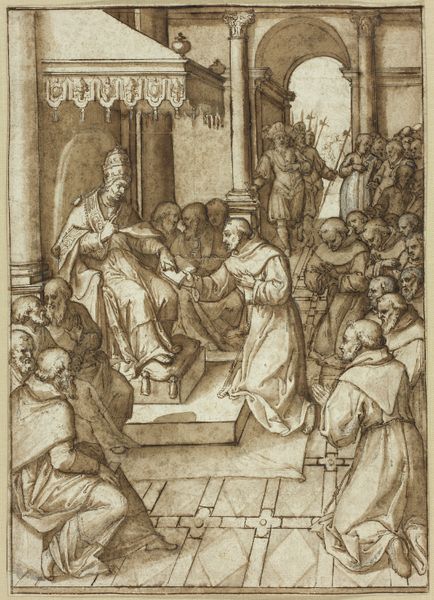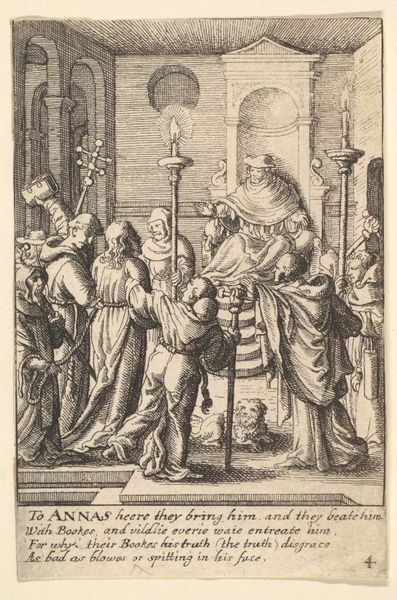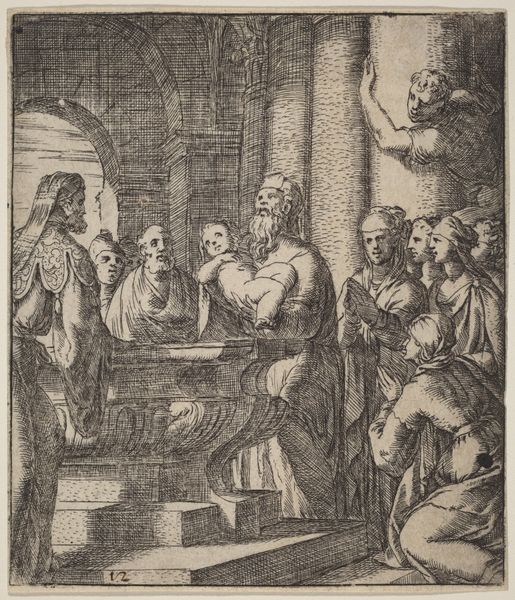
The Betrothal of the Virgin, from The Life of the Virgin 1504
0:00
0:00
drawing, print, engraving
#
drawing
#
pen drawing
# print
#
figuration
#
line
#
history-painting
#
northern-renaissance
#
engraving
Dimensions: sheet: 11 11/16 x 8 3/8 in. (29.7 x 21.2 cm)
Copyright: Public Domain
Curator: Immediately, I'm drawn to the incredible detail achieved with what must have been very fine tools. It feels both intricate and solid, the composition packed yet balanced. Editor: Yes, that density speaks to the artistry and labor put into its creation. This engraving by Albrecht Durer, dating to around 1504, depicts "The Betrothal of the Virgin, from The Life of the Virgin." It's currently held at the Metropolitan Museum of Art. Durer, of course, a master of printmaking. Curator: Printmaking really allowed for broader consumption, didn't it? An object made accessible to wider audiences than perhaps a unique painting. Editor: Absolutely. These prints allowed the reproduction and dissemination of images on a scale previously unimaginable. It affected religious devotion, certainly, but also impacted ideas about artistry and the market for images. Note the architectural setting. How does Durer depict the church? Is he thinking about its social function or its physical construction? Curator: I think both. The architectural details create an impressive setting. There is an almost diagrammatic quality to it, but the profusion of pillars and arches within the arch also point to something much larger. Think of the guilds. Think of workshops teaching new trades. It takes more than artistry to do what Durer is doing. Editor: Consider too the positioning of the figures within this institutional setting. Mary's betrothal signifies not just a personal union, but also a moment freighted with religious and social meaning. Who gets included in this scene? And how does that inclusion define belonging and acceptance? Curator: It's a testament to Durer’s technical skills that he creates such varied textures and depth using just lines. I'm also intrigued by the discarded object at the front - what’s the significance of that? Editor: Some have argued it signifies Joseph's abandoned carpentry tools, alluding to his occupation and humble status. Its inclusion places labor – physical making – within this sacred space. Curator: Seeing such meticulousness and thoughtful staging makes you consider what impact these prints would have made at the time, the debates they started. It's so interesting to think of this piece beyond just religious art. Editor: Exactly. By investigating these works, we not only uncover artistic talent but expose the foundations upon which society forms and re-forms its own value system.
Comments
No comments
Be the first to comment and join the conversation on the ultimate creative platform.
